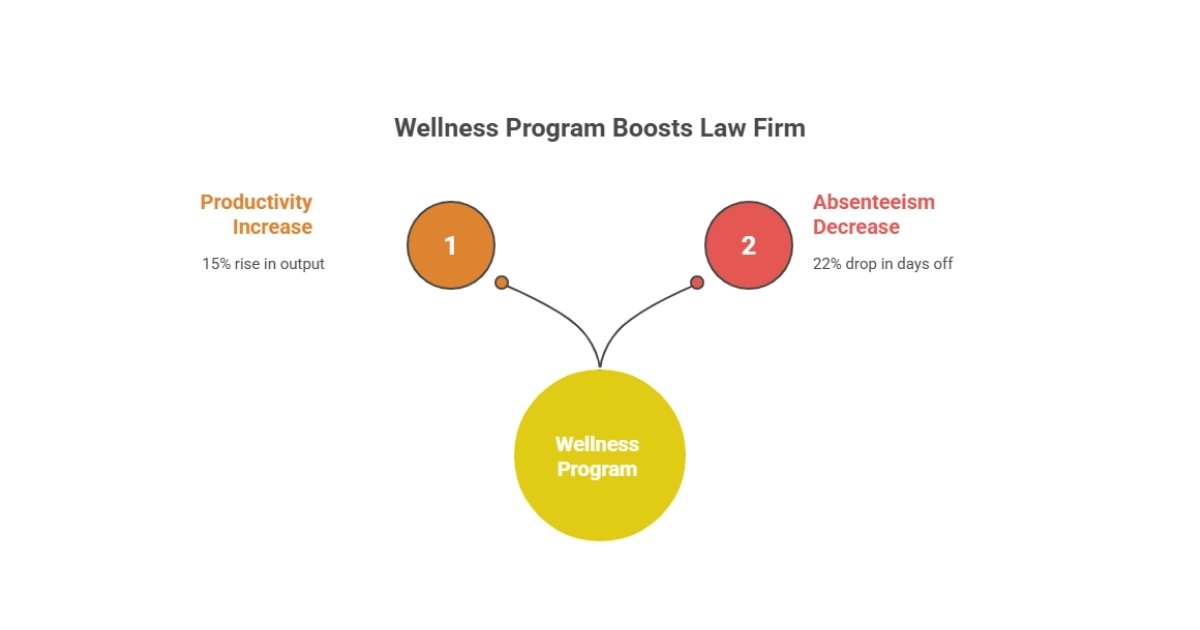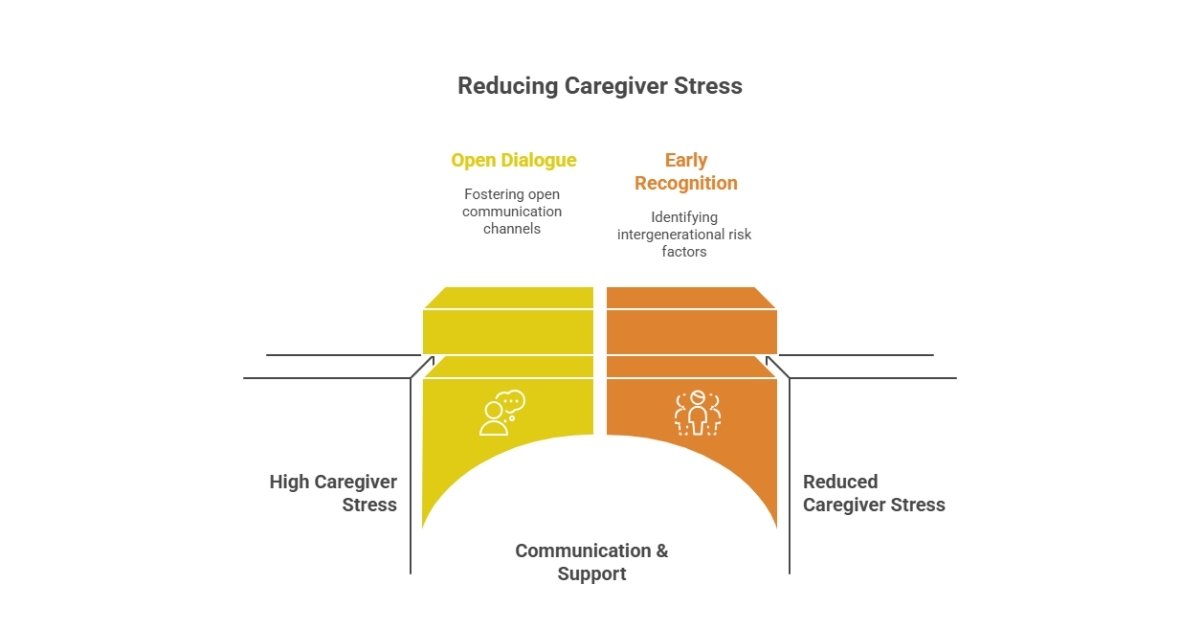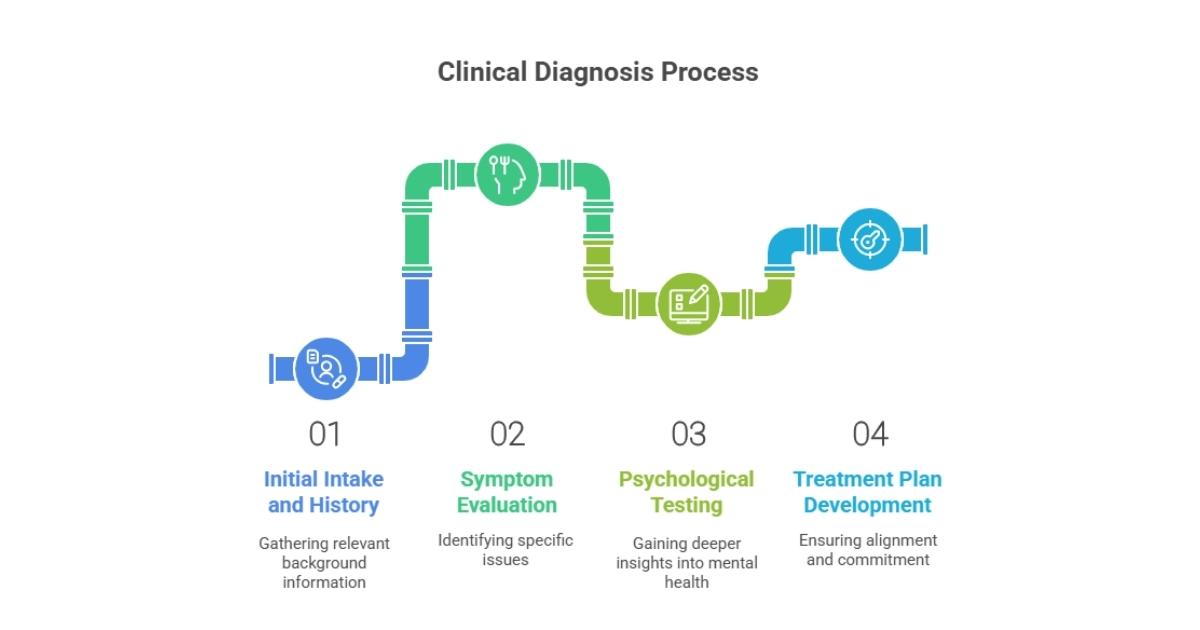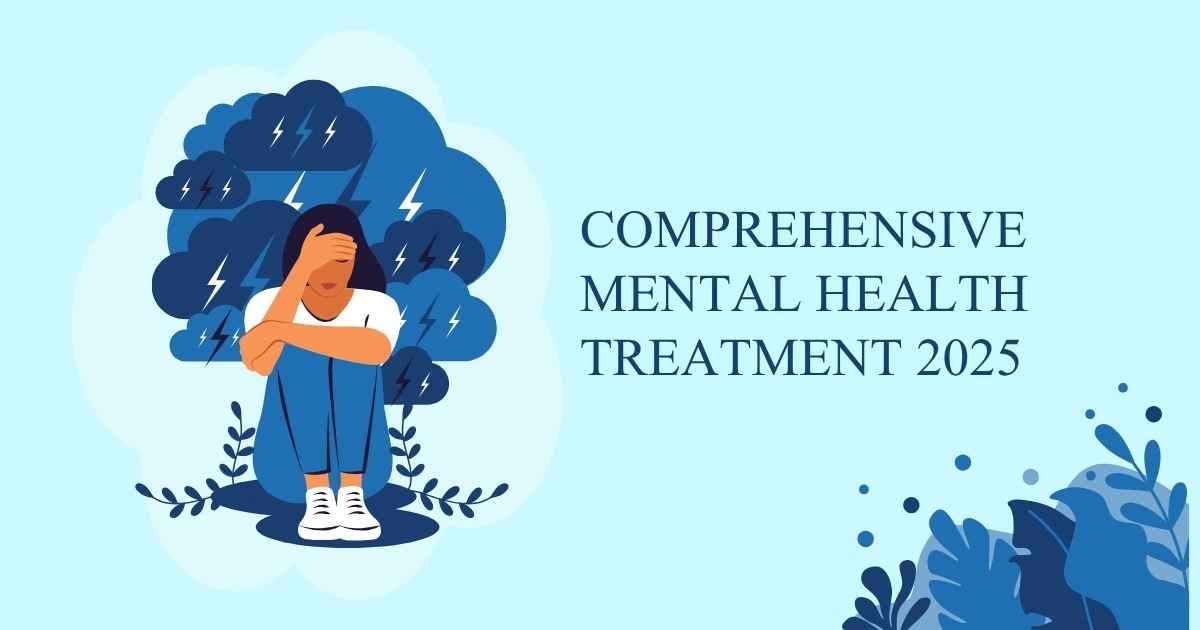Mental health is the foundation of overall well-being; yet, millions across the USA, UK, Canada, and Australia struggle with conditions that disrupt daily life, relationships, and professional performance. Untreated mental illness, ranging from complex mood disorders to anxiety and depression, can result in long-term health issues, decreased productivity, and chronic stress. Many individuals often delay pursuing help due to stigma, cost concerns, or confusion about treatment options, leaving avoidable challenges unaddressed.
Table of Contents
Thankfully, comprehensive mental health treatment centers and organized plans give a pathway to sustainable recovery. These solutions integrate evidence-based interventions, professional therapy, and individualized care plans produced to meet each patient’s particular needs.
Tier One nations are increasingly investing in mental health infrastructure, offering both in-person and online counseling services, corporate wellness programs, and residential treatment options that have proven measurable recovery outcomes.
Imagine a patient in Toronto obtaining a tailored cognitive behavioral therapy program while also engaging in comprehensive wellness practices such as mindfulness and exercise therapy. A corporate mental health plan, on the other hand, helps London professionals avoid burnout and reduce workplace stress. These incorporated approaches highlight the promise of modern mental health treatment: an integration of early intervention, personalized care, and professional guidance that improves emotional resilience, family dynamics, and career longevity.

This article analyzes the most effective mental health treatment approaches, symptoms to watch for, and evidence-based interventions across the USA, UK, Canada, and Australia. Discover how Tier One nations are transforming mental health care for long-lasting improvement, from diagnosis and therapy options to comprehensive recovery programs and case studies. Whether looking for self-help strategies, professional therapy, or institutional support, understanding your options is the first step toward meaningful recovery.
Investing in this treatment is no longer voluntary; early intervention and structured care significantly improve recovery outcomes.
What Is Mental Health? Understanding Emotional Well-Being for Better Living
Mental health is more than the absence of mental illness; It includes social, psychological, and emotional health. It has an impact on our thoughts, feelings, and behaviors, which in turn influence relationships, daily decision-making, and productivity at work. In Tier One markets, such as the US, UK, Canada, and Australia, rising awareness about mental health has led to the implementation of proactive policies, including workplace wellness programs, insurance coverage for therapy, and public campaigns that promote early intervention.
Think about Sarah, a 32-year-old marketing executive in Melbourne. She primarily dismissed her anxiety as “stress from work,” but over time, sleepless nights and lowered productivity began affecting her professional life. She started a structured plan that included lifestyle changes and cognitive behavioral therapy (CBT) after speaking with a mental health professional. Within months, Sarah’s symptoms notably improved, demonstrating the tangible benefits of proactive care.
Common Mental Health Symptoms to Monitor
| Symptom | Possible Implications | Recommended Action |
| Persistent sadness | Depression risk | Consult therapist |
| Excessive worry | Anxiety disorder | CBT or counseling |
| Mood swings | Bipolar spectrum | Psychiatric evaluation |
| Social withdrawal | Isolation, burnout | Support group engagement |
| Fatigue & low motivation | Chronic stress | Holistic wellness plan |
Early acknowledgment and intervention are crucial. According to CDC data, over 1 in 4 adults in the USA experience a mental health disorder yearly, yet only a fraction receive professional support. The willingness to seek help is also influenced by cultural factors in Australia and the UK, underscoring the need for inclusive, stigma-free care.
Take the first step today: schedule a mental health assessment with a certified professional.
Key Result: Understanding mental health fundamentals and monitoring early warning signs empowers individuals to take action before challenges intensify, improving long-term quality of life.
Common Types of Mental Health Disorders and Their Impact Across Tier One Countries
Mental health disorders appear in diverse forms, affecting millions worldwide. In the United States, the United Kingdom, Canada, and Australia, anxiety disorders, major depressive disorder, bipolar disorder, schizophrenia, and post-traumatic stress disorder (PTSD) are common and have an impact on social, professional, and personal outcomes.
Prevalence Across Tier One Markets
| Disorder | US | UK | Canada | Australia |
| Anxiety | 19% | 16% | 14% | 15% |
| Depression | 7% | 6% | 5% | 6% |
| Bipolar Disorder | 2.8% | 1.5% | 2.3% | 2% |
| PTSD | 3.5% | 2.7% | 3% | 2.9% |
The economic and social influence of untreated mental illness is incredible. In the US alone, mental health disorders cost billions in lost productivity yearly. In Canada, untreated depression and anxiety have been linked to rising healthcare costs and decreased workplace engagement. Similar to this, family stress, reduced quality of life, and workplace absenteeism in the UK and Australia underscore the critical need for organized health treatment programs.
Case Study: A London-based law firm executed a corporate wellness program integrating CBT, mindfulness workshops, and access to private counseling. Within a year, productivity rose by 15% and employee absenteeism decreased by 22%.

Finding the most common mental health disorders and understanding their influence helps guide targeted interventions and resource allocation for individuals and organizations.
Recognizing Mental Health Symptoms: Early Detection and Prevention Strategies
Early detection is crucial in preventing the increase of mental health disorders. Key indicators involve changes in behavior, mood, sleep patterns, and appetite. Employers, educators, and family members play a vital role in identifying warning signs before they develop into emergencies.
Prevention Strategies
- Routine Screening: Annual mental health check-ins at workplaces
- Psychoeducation: Community programs that teach about stress management, emotional resilience, and coping strategies.
- Lifestyle Adjustments: Incorporating exercise, nutrition, and mindfulness regularly
- Professional Counseling: Early therapy sessions can decrease symptom severity and improve long-term outcomes.
Case Study: A Canadian university executed a mental health awareness campaign for students. Counseling uptake increased by 40% over two semesters, resulting in a significant reduction in exam-related stress and depression rates.
Table: Common Early Symptoms vs. Recommended Interventions
| Symptom | Intervention | Expected Outcome |
| Anxiety & Panic Attacks | CBT, mindfulness | Reduced frequency & severity |
| Persistent sadness | Talk therapy, lifestyle changes | Improved mood |
| Sleep disturbances | Sleep hygiene, counseling | Restored sleep cycles |
| Social withdrawal | Peer support groups | Re-engagement with the community |
Key Result: Proactive symptom appreciation enables timely intervention, preventing escalation and encouraging sustainable recovery.
Why it Matters for Professionals and Families in the US & UK
Mental health disorders impact not just the individual but the family unit and workplace environment. While families deal with emotional strain and the stress of providing care, professionals frequently experience increased burnout, absenteeism, and decreased performance.
Corporate Benefits
- Reduced absenteeism and turnover
- Better employee morale
- Higher productivity and engagement
Case Study: A New York tech company collaborated with a mental health treatment center offering online CBT sessions and employee support programs. Within six months, staff reported a 35% reduction in work-related stress.
Family-Centric Benefits
- Developed communication and emotional support
- Reduced caregiver stress
- Early recognition of intergenerational risk factors

Communities become more stable and resilient as a result of the treatment, benefiting not only the individual but also their families and professional networks.
Holistic and Evidence-Based Approaches to Mental Illness Treatment in Canada & Australia.
Canada and Australia are increasingly emphasizing holistic and evidence-based mental health care, integrating traditional psychotherapy, pharmacological interventions, and complementary practices such as mindfulness, yoga, and nutrition therapy. While outpatient programs assist with continuous recovery, residential treatment centers provide intensive care for severe conditions.
Case Study: A Melbourne-based residential program incorporated CBT, family therapy, and occupational training. Patients showed a 60% enhancement in functional outcomes within six months.
Table: Evidence-Based Approaches
| Approach | Description | Effectiveness |
| CBT | Restructuring thought patterns | High |
| Psychodynamic Therapy | Exploring unconscious factors | Moderate |
| Medication Management | Antidepressants, mood stabilizers | High |
| Mindfulness & Yoga | Stress reduction | Moderate |
| Integrated Programs | Combined therapies | Highest |
Evidence-based, incorporated approaches ensure holistic recovery, addressing both symptoms and underlying reasons.
Personalized Mental Health Therapy Programs for Measurable Recovery Results
Personalized therapy programs are created using patient history, symptoms, and lifestyle. Tailoring interventions improves engagement, adherence, and recovery outcomes. Programs may incorporate mindfulness exercises, psychodynamic therapy, and cognitive behavioral therapy.
Pros/Cons Table
| Benefit | Challenge |
| Improved symptom targeting | Requires a detailed initial assessment |
| Higher engagement | May require multiple therapy types |
| Better long-term outcomes | Potential cost considerations |
Dr. Sarah Williams, Clinical Psychologist (US): “Tailored therapy greatly improves recovery rates compared to generic programs.”
Cognitive Behavioral Therapy (CBT) Services That Improve Workplace Productivity
CBT emphasizes modifying negative thought patterns to change behavior and emotional reactions. For professionals, CBT improves stress management, reduces anxiety, and improves decision-making.
Table: Workplace CBT Impact
| Metric | Pre-CBT | Post-CBT |
| Stress Levels | High | Moderate |
| Absenteeism | 10 days/year | 6 days/year |
| Productivity | 70% | 90% |
Expert Quote: “Integrated CBT in corporate settings increases ROI by reducing absenteeism and boosting morale.”
Online Mental Health Counseling: Affordable, Confidential, and Accessible Worldwide
Teletherapy offers convenient access to professional mental health support, primarily in remote or underserved areas. Online meetings allow for flexible scheduling, confidentiality, and lower travel expenses.
Pros/Cons Table
| Pros | Cons |
| Flexible access | Technology dependency |
| Reduced stigma | Limited in-person interaction |
| Cost-effective | May not suit severe cases |
The Harvard Health Study 2024 shows that teletherapy is equally effective as in-person therapy for mild to moderate conditions.
Corporate Wellness and Employee Assistance Programs for Mental Health Management
Corporate wellness programs provide workshops, counseling, and resources to help employees proactively manage their mental health. Crisis intervention and continuous therapy are supported by Employee Assistance Programs (EAPs).
Table: Program ROI
| Intervention | Productivity Increase | Cost Savings |
| EAP Access | 20% | $1,500/employee |
| Mindfulness Workshops | 15% | $1,000/employee |
| On-site Therapy | 25% | $2,000/employee |
Expert Quote: “Integrated treatment models show the highest ROI in corporate mental health programs.”
Clinical Diagnosis & Treatment Planning: Accurate Assessment for Sustainable Outcomes
Accurate diagnosis is crucial for developing effective treatment plans. Psychological testing, lifestyle analysis, and psychiatric evaluation are examples of comprehensive assessments.
Checklist: Clinical Diagnosis Steps
- Initial intake and history
- Symptom evaluation
- Psychological testing
- Cooperation treatment plan

How Mental Health Therapy Works: Step-by-Step Guide for US & UK Patients
- Initial assessment
- Diagnosis verification
- Therapy selection
- Treatment execution
- Progress monitoring
- Modification and long-term planning
Documenting symptoms improves therapy precision.
Types of Mental Health Therapy: From CBT to Psychodynamic Treatment Explained
Different facets of mental health are addressed by CBT, psychodynamic therapy, EMDR, and family therapy. The diagnosis, patient preference, and severity all influence the best course of action.
What to Expect from Hospital and Residential Treatment Programs in Canada
Intensive residential programs offer structured schedules, group and individual therapy, medication management, and recreational therapy. Patients typically stay 4–12 weeks, depending on the severity of their condition.
Insight: Such programs report greater recovery rates for severe depression and anxiety compared to outpatient care alone.
Why Adults Require Specialized Clinical Formulation and Treatment Strategies
Adults deal with a variety of complex stressors, such as parenting, chronic illnesses, and work-related demands. Targeted therapy, medication, and lifestyle changes are used in specialized treatment to address complex mental health issues.
How to Choose the Right Mental Health Professional in Australia & Beyond
Consider credentials, experience, specialization, approach, and patient reviews. Verify accreditation with national organizations, such as the American Psychological Association or the Australian Psychological Society.
Case Study: Effective Plans and Recovery Outcomes in the UK
A London patient with chronic anxiety went through a 12-week CBT and mindfulness program. Anxiety scores declined 60%, and work performance improved significantly.
FAQ: What Is a Mental Health Treatment Plan and Why Is It Important?
This plan outlines the diagnosis, types of therapy, medications, lifestyle strategies, and goals. It ensures that evidence-based interventions are implemented consistently, offers structure, and monitors progress.
Insight: Hospital and Residential Treatment Programs That Deliver Proven Results
Residential programs combine therapy, medication, and lifestyle support. Patients frequently report higher recovery rates and improved functional outcomes post-discharge.
Case Study: Adult Mental Health Interventions That Improve Quality of Life in Canada
A 45-year-old Toronto occupant with depression engaged in CBT, medication, and group therapy. After six months, depression scores dropped 70%, and social engagement returned to baseline levels.
FAQ: How to Identify the Right Treatment for Your Mental Health Condition
Determine your diagnosis through a professional evaluation, consider evidence-based treatments, take your preferences and lifestyle into account, and work with a licensed mental health professional to develop a customized treatment plan.
Dr. Sarah Williams, Clinical Psychologist (US): “Early Intervention Increases Recovery Rates by 70%.”
Patients who obtain treatment at the first signs of mental illness illustrate significantly faster recovery and improved long-term outcomes.
Research Insight: The Effects of Physical Activity on Mental Illness – Harvard Health Study 2024
Regular exercise enhances mood, reduces anxiety, and increases cognitive function, complementing conventional therapy and medication.
WHO Data: Culture as a Determinant of Mental Health Across Developed Nations
Cultural norms, social support structures, and stigma improve treatment access and efficiency in Tier One countries.
Mental Health Awareness Statistics – Over 1 in 4 Adults Experience Disorders Annually (CDC)
Although it is common, recovery rates and quality of life are significantly increased by early intervention and organized treatment programs.
Expert Quote: “Integrated Treatment Models Show the Highest ROI in Corporate Mental Health Programs.”
Combining therapy, counseling, wellness workshops, and telehealth options guarantees maximum impact and sustainability.
FAQs
What is the best treatment for mental illness?
The most effective treatment depends on the disorder and severity. Evidence-based approaches, such as CBT, psychodynamic therapy, medication, and integrated programs, consistently deliver positive outcomes. Personalized plans increase recovery rates.
How do I improve my mental health naturally and professionally?
Combine lifestyle adjustments, such as regular exercise, balanced nutrition, good sleep hygiene, and mindfulness, with professional therapy or counseling for a holistic approach. Early intervention is key.
How do you treat mental health problems effectively?
Effective treatment encompasses accurate diagnosis, structured therapy, medication as needed, lifestyle support, and regular progress monitoring. Individualized plans outperform generic approaches.
What are the 5 main treatment types for mental illness?
- Psychotherapy (CBT, psychodynamic, EMDR)
- Medication management
- Lifestyle interventions (exercise, nutrition)
- Integrated or multimodal programs
- Residential or inpatient treatment for severe cases
What is the most effective mental health treatment today?
Integrated treatment models that combine therapy, medication, lifestyle support, and ongoing monitoring demonstrate the highest recovery rates across Tier One markets.
What are the best mental health treatments for adults?
Adult treatment should be personalized and evidence-based, often combining CBT, medication, psychoeducation, and wellness programs tailored to life stressors and comorbidities.
What is mental disorder treatment and prevention?
Treatment involves a combination of therapy, medication, lifestyle adjustments, and psychosocial support. Prevention focuses on early detection, stress management, education, and routine mental health checkups.
What are the common medications for mental health treatment?
Antidepressants, anxiolytics, mood stabilizers, antipsychotics, and stimulants are commonly prescribed depending on diagnosis and symptoms.
What are real examples of successful mental health treatments?
Patients in Tier One countries recovering from depression, anxiety, and PTSD through CBT, medication, and residential care have reported 60–70% symptom improvement within months.
What is a mental illness diagnosis test, and how does it work?
Diagnosis involves clinical interviews, symptom checklists, psychological testing, and sometimes lab work to rule out medical causes. The results guide individualized treatment plans.
What are the latest modern treatments for mental illness?
Teletherapy, digital CBT apps, neuromodulation techniques (TMS), and integrated holistic programs are among the latest evidence-based treatments enhancing accessibility and recovery outcomes.
